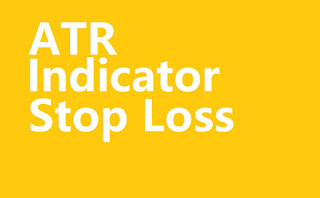In today's fast-paced financial markets, effective risk management is crucial for successful trading. Setting appropriate stop-loss levels is an essential aspect of risk management, and one of the tools traders often rely on is the Average True Range (ATR) indicator. ATR provides valuable insights into market volatility and helps traders determine suitable stop-loss levels. In this article, we will explore the best ATR indicators available for setting stop-loss orders to enhance your trading strategies.

Understanding the ATR Indicator
The Average True Range (ATR) is a technical analysis indicator that measures market volatility. Developed by J. Welles Wilder, the ATR indicator provides traders with information about the average trading range of an asset over a specified period. Unlike other volatility indicators, the ATR takes into account gaps and limit moves, providing a more comprehensive view of price movement. It is typically displayed as a line chart and is commonly used to set stop-loss levels, determine trade sizes, and identify potential trend reversals.
ATR Indicator Types
There are various types of ATR indicators available, each with its own unique features and applications. Let's explore some of the best ATR indicators commonly used for setting stop-loss levels:
1. Basic ATR Indicator
The basic ATR indicator calculates the average true range over a specific period, usually 14 days, and provides a single line chart. It is a simple yet effective tool for determining stop-loss levels based on historical volatility.
2. Modified ATR Indicator
The modified ATR indicator introduces additional parameters and customization options to the basic ATR. Traders can adjust the period length, smoothing techniques, and other settings to tailor the indicator to their specific trading style and preferences.
3. Moving Average ATR Indicator
The moving average ATR indicator combines the ATR with a moving average line, offering a smoothed representation of market volatility. By incorporating a moving average, this indicator helps filter out short-term fluctuations, providing a clearer picture of the overall volatility trend.
4. ATR Bands Indicator
The ATR bands indicator plots upper and lower bands around the ATR line, creating a channel that represents volatility boundaries. Traders can use these bands to identify potential breakout levels or areas of support and resistance for setting stop-loss orders.
5. ATR Trailing Stop Indicator
The ATR trailing stop indicator dynamically adjusts the stop-loss level based on the ATR value. As the price moves in favor of the trade, the stop-loss is tightened to lock in profits while still allowing for potential upside. This indicator is particularly useful in trending markets.
Best Practices for Setting Stop Loss Using ATR
To make the most of the ATR indicator for setting stop-loss levels, consider the following best practices:
1. Adapt to Market Volatility
Market volatility can vary, so it is essential to adjust your ATR parameters accordingly. During high volatility periods, wider stop-loss levels may be required, while lower volatility periods may call for tighter stop-loss levels. Monitor the market conditions and adapt your ATR settings accordingly.
2. Combine with Other Technical Analysis Tools
While the ATR indicator is valuable on its own, combining it with other technical analysis tools can provide a more comprehensive trading strategy. Consider using ATR in conjunction with trend lines, moving averages, or other indicators to confirm potential entry and exit points.
3. Backtest and Refine
Before implementing your stop-loss strategy using the ATR indicator, it is crucial to backtest and refine your approach. Backtesting involves applying your strategy to historical market data to evaluate its effectiveness. This process helps you identify any shortcomings and make necessary adjustments to optimize your stop-loss levels.
4. Consider Risk-Reward Ratio
When setting stop-loss levels using the ATR indicator, it is important to consider the risk-reward ratio of your trades. Determine the potential reward you are seeking for each trade and ensure that your stop-loss level aligns with your desired risk. A favorable risk-reward ratio helps to protect your capital and maximize potential profits.
5. Regularly Review and Adjust
Market conditions can change rapidly, and what may have been an appropriate stop-loss level previously may no longer be valid. Therefore, it is crucial to regularly review and adjust your stop-loss orders based on the most recent ATR readings and market developments. Stay updated with the latest market news and adjust your stop-loss levels accordingly.
Conclusion
Setting effective stop-loss levels is a key component of successful trading, and the Average True Range (ATR) indicator provides valuable insights into market volatility for this purpose. By incorporating the best ATR indicators discussed in this article, traders can enhance their risk management strategies and improve their overall trading performance. Remember to adapt your ATR settings to market volatility, combine ATR with other technical analysis tools, backtest and refine your approach, consider risk-reward ratios, and regularly review and adjust your stop-loss levels. Utilizing the power of the ATR indicator, you can make more informed decisions and navigate the financial markets with greater confidence.


Posting Komentar untuk "Best ATR Indicator for Setting Stop Loss"